The Appeal of Slice of Life
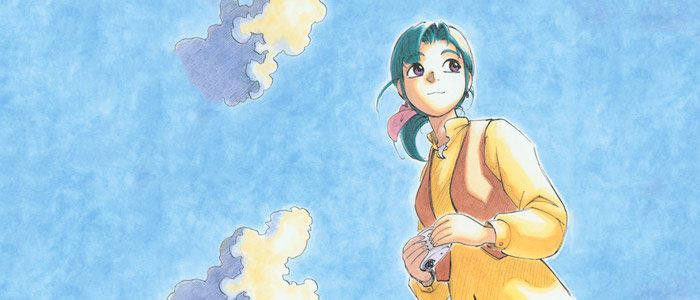
Slice of life is a very strange genre. Defined by the portrayal of regular everyday life, it has uneventful mundanity as its narrative center. As such it completely lacks any form of conventional dramatic structure; there is no goal driven by a conflict, and no act division led by buildup and catharsis. Like an anti-narrative mode it embraces a seeming plotlessness, resulting from a meandering non-directionality and a lack of high-stake events. Indeed, it goes against pretty much everything normally recognized as fundamental facets of engaging storytelling. With such unconventionality at its core, one would assume that its market is limited to the realm of obscure avant-gardism, with a small underground cult following as its only audience. But such is not the case. Ever since the emergent waves of iyashi-kei and nichijou-kei in the late 1990s to mid-2000s – not to mention the exploding popularity of The Melancholy of Haruhi Suzumiya (2006) – slice of life has been one of the most prevalent and defining staples of modern anime and manga. Why is that? What is it about this seemingly esoteric approach to storytelling that attracts so many people, both in and outside of Japan? What appeal lies in the portrayal of the everyday?
The following article is an attempt at answering these questions. Based on empirical information from forum threads that discuss topics like “What is the appeal of slice of life?” and “What makes a good slice of life show?”, it examines the basis for enjoyment for fans and consumers of the genre. The information from these threads is diverse and varied, but can generally be comprised into three main categories: relaxation, characters, and relatability. The article will therefore be structured accordingly, exploring each of these categories by both covering the empirical material and expanding on it with examples of analysis and scholarly material.
Relaxation
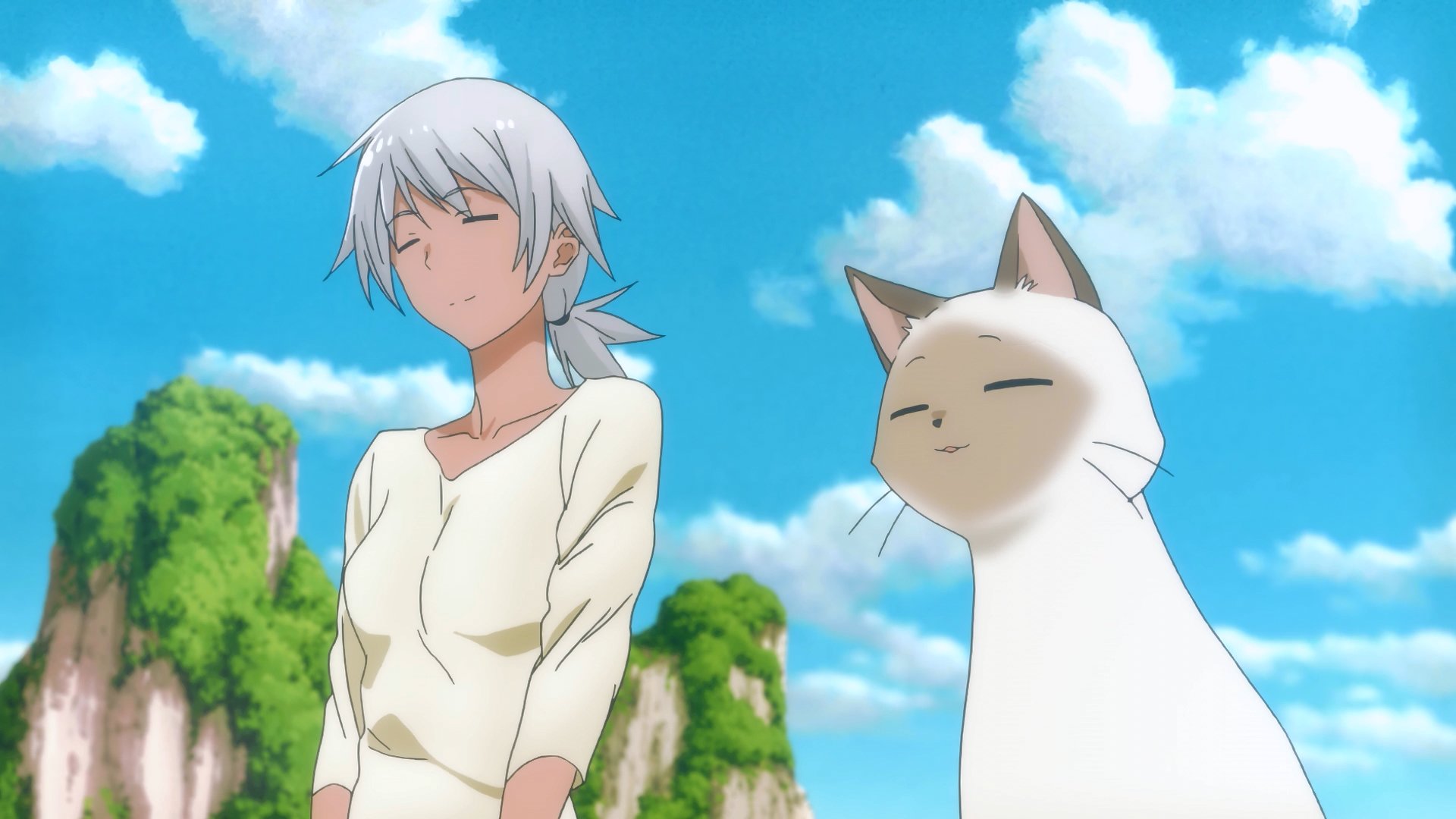
In a lot of the forum threads, a certain context for viewing habits of slice of life is frequently described: one comes home after a long and stressful day at work or school, and just sits down and watches something that doesn’t require too much energy. Alternatively, one uses it as a change of pace from other shows that are more plot- and action-oriented. In short: slice of life is enjoyed as something calm and easy on the senses, that serves as a nice breather between more demanding activities. The genre is here first and foremost valued for its lack, for what it isn’t; it isn’t one of conflict that requires emotional investment, and it isn’t filled with high-octane action or dramatic twists and turns. The relaxation thus lies in the absence, in the quality of nothingness. Obviously there is more to it than that though. Otherwise the same itch would be scratched from just watching paint dry on a wall. Rather than simply absence, it would be safe to say that slice of life contains a certain quality that actively evokes the viewer’s sense of relaxation.
What better way to start examining this quality than by looking at the subset that has “relaxation” as pretty much its mission statement: iyashi-kei. Literally translating to “healing-type”, iyashi-kei emerged as part of a wider iyashi-trend (or “healing boom”) in mid-1990s Japanese market culture. From iyashi-music, to iyashi-books and -magazines, to iyashi-television and -DVDs, to various types of therapy, all promised the provision of a sense of “calm” to the consumer. These products offered a break from the rest of the contemporary Japanese media landscape, by providing a personal space isolated from the affections of other commodities. It was a form of personal “mood regulation”, a tool through which to bring variation to one’s emotional everyday (Roquet, 88-89). Evidently, this is very much in line with the type of consumption expressed in the forums; slice of life anime is seen as a way to escape from the hectics of other media and one’s day to day life, into a space of calm.
In the discussion of iyashi-kei‘s literary domain, Paul Roquet coins the defining term “ambient literature”. Drawing from the ambient music of Brian Eno, he argues that ambient literature aims through a light and transparent literary mode “to generate calming moods and to provide a space to think relatively free from outside affective manipulation.” (Roquet, 90) From its diction to its stories, ambient literature carries a balance between ambiguity and transparency. Words and phrases are kept seamlessly simple yet general enough to lack a concrete particularity. The stories are comfortably familiar, while also containing touches of mystery that aren’t meant to be resolved but to simply exist as mysteries. Perceptual experiences of actions irrelevant to the narrative – such as a character sitting in a chair – are described with naturalistic detail in order to share the experiences with the reader (Roquet, 95-98). All of this holds no particular inherent value so much as it contributes to the mood regulation, invoking a calm in the reader that purposely carries on throughout the story.
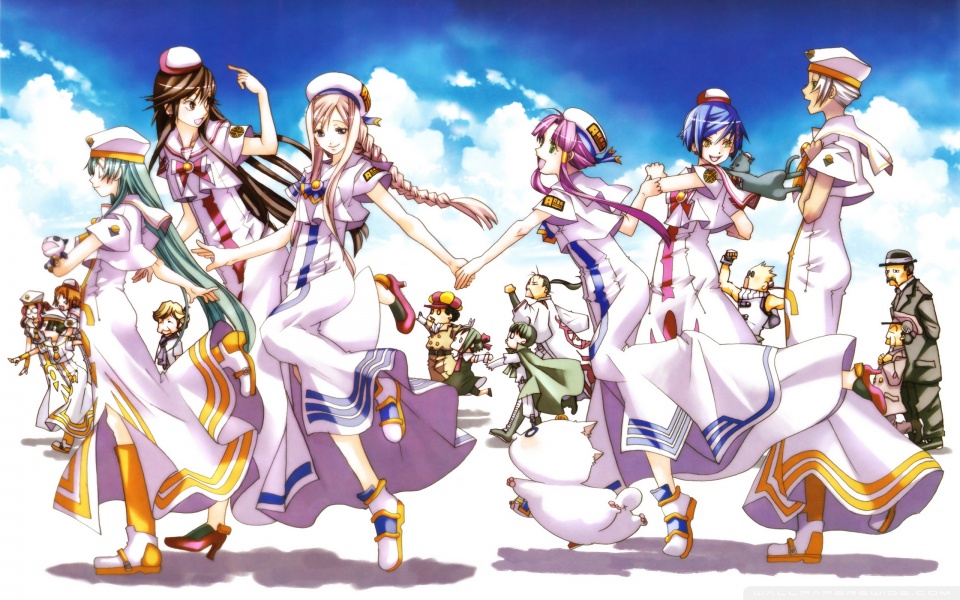
Another word for ambience in this sense is “atmosphere”, which incidentally is a frequent answer in the forum threads about what makes a good slice of life. In order to evoke an atmosphere, iyashi-kei series are no strangers to the above mentioned literary elements. Aria (2005) for example – which is the most commonly brought up title in iyashi-kei discussions – follows an ensemble cast of young women in their daily work as gondolier (or “Undine”) apprentices in the utopian city of Neo-Venezia. No context is provided for the origin of this city or the water covered Mars that it exists on, but is simply presented as given. Elements of otherworldly mystery are throughout the series introduced, but never with the desire to be uncovered. Through the utopian sci-fi backdrop yet mundane narrative mode, a symbiosis is achieved between exoticism and comfortable familiarity. The positively receptive outlook of its protagonist Akari frequently provides acknowledgement and celebration of little details of perceptual experience.
On top of this, there is also the various audiovisual elements that contribute to the atmosphere. The simplistic color scheme of mainly white and blue is soft and light on the eyes. The animation is limited and restrained, with most of the motion being conveyed through compositing. The score is a laid-back approach to Brazilian choro music – which in combination with the minimalistic sound design creates a literal quietness. The series moves at a patiently slow pace, and often times pausing altogether to briefly absorb a certain situational experience. All in all, the mood regulation of Aria is a prime example of that found within iyashi-kei works; through a soothing stillness and picturesque celebration of mundanity, it creates a viewing experience marked by calm.
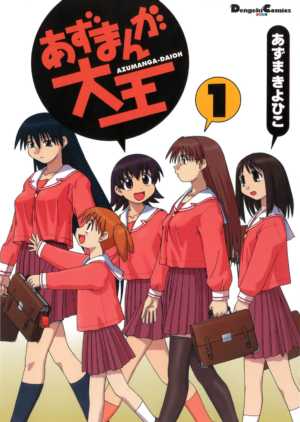
The element of relaxation is not limited to iyashi-kei however. It can also be seen in the subgenre of nichijou-kei, or “everyday-type”. Nichijou-kei arose in the early to mid-2000s through a row of yonkoma manga (four cell manga), starting with Azumanga Daioh (1999, anime 2002) and then further established with works such as Lucky Star (2004, anime 2007), Hidamari Sketch (2004, anime 2007) and K-On! (2007, anime 2009). It typically follows an ensemble cast of five or so teenage girls as they go about their daily lives as friends. The setting is highly ordinary – often times being a high school – and is not uncommonly modeled after a real world location (Tanaka). One could say that it is what you get if you take the symbiosis of transparency and ambiguity in iyashi-kei, but remove the ambiguity. There is no actively calming ambience to be found. No exoticism or detailed attention to perceptual experience is present. The everyday is not celebrated or a vessel for mood regulation, but simply presented.
So how can the purely transparent nature of nichijou-kei evoke relaxation? One sentiment that pops up a lot in several forum threads is that of escapism. To many watchers, the fun and easygoing activities between friends as presented in nichijou-kei depict a life that they wish they had. As an idyllic fiction far away from their own tiresome realities, it serves as a nice substitute for what they lack in their lives. So while nichijou-kei may not have the mood regulating calm of iyashi-kei, it nonetheless provides a space within which one can reside, to temporarily relax and recuperate from one’s stressful everyday.
The active mood regulation of iyashi-kei and the escapist idyll of nichijou-kei together illustrate the quality of relaxation that the genre at large carries. Even with series that only partially or not at all embody either of these two subgenres, one can see how their relaxing potentiality comes from elements like those discussed above.
Characters
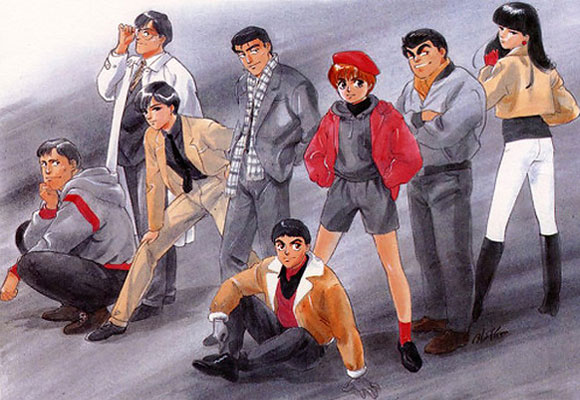
In the forum threads on the topic of what makes a good slice of life, the number one aspect brought up is the importance of characters. This is not surprising, considering that all forms of the genre are centrally character-driven. Instead of the the plot – as in actions, events and other external elements – being what drives the story, the focus is on the characters – their personalities, motivations, relationships and developments. But unlike your typical character drama, which still contains an essential plot progression caused by actions, slice of life diminishes the agency of plot to the point of superficiality. In a standard slice of life scene, the plot event in entirely secondary; what matters is how the characters deal with it. To cite forum commenter IssacandAsimov regarding Azumanga Daioh:
Is the advent of a character developing and seeking to dispel hiccups the most intellectually stimulating plot event I could imagine? No. In fact, that indeed sounds quite boring. But you’re not just watching a character get hiccups. You’re watching Osaka deal with hiccups, and seeing how Chiyo, Tomo and co. contend with the situation. (“Random slice of life anime – How did you guys come to like it?”, MyAnimeList)
Through strong personalities and a dynamic ensemble chemistry, even the most boring and pointless narrative event can become interesting and entertaining. Much of the engagement in slice of life thus comes from seeing how the traits and dynamics of the cast play out in different situations. In the long run these play-outs may not just reflect, but also explore and even develop the characters. A great example is the anime adaptation of the most successful nichijou-kei title, K-On! Early on the series establishes the basic personalities of its four ensemble cast members. Yui is an airhead yet lively and enthusiastic, Ritsu is tomboyish and somewhat reckless and selfish, Mio is responsible but shy, and Mugi is mannerly and of an extremely different social background. These personalities are then explored in relation to each other, of which the earliest thorough occurrence is a scene where they perform a part time job as traffic surveyors to get money for Yui’s guitar. To cite Digibro’s observation of the scene:
When Yui and Mugi are paired up, we see how Mugi is capable of hyper-concentration, while Yui is easily bored. Ritsu gets lost in the rhythm of her car counter, and Mio starts thinking about the time signatures of the beat Ritsu is playing before she tells Ritsu to do her job correctly. When Mugi and Mio are together, both of them are working hard, while Ritsu and Yui are slacking off. At the end, all of them are afflicted with some level of occupational illness. […] By the end of this episode, we start to develop a sense of what a Ritsu and Yui scene or a Mugi and Yui scene might feel like, and how they compare with one-another.
As a plot point this scene is completely inconsequential – the girls ultimately end up getting a discount on the guitar because Mugi’s father owns the store – but as a character point it effectively establishes the varied and nuanced dynamics within the cast. The rest of the series is then largely centered around these types of exploration, with the personalities and relationships of the characters being at the forefront. As the series furthermore progresses, these come to gradually evolve. Through their continuous interactions with each other, the characters develop as both individuals and as a group. In the end, the dramatic weight is not on the cast’s journey as a music ensemble – which the premise might suggest – but as growing friends. While not all slice of life titles may be as thorough in their character explorations as K-On!, the series nonetheless perfectly illustrates the rich possibilities of such explorations that lies at the heart of the genre.
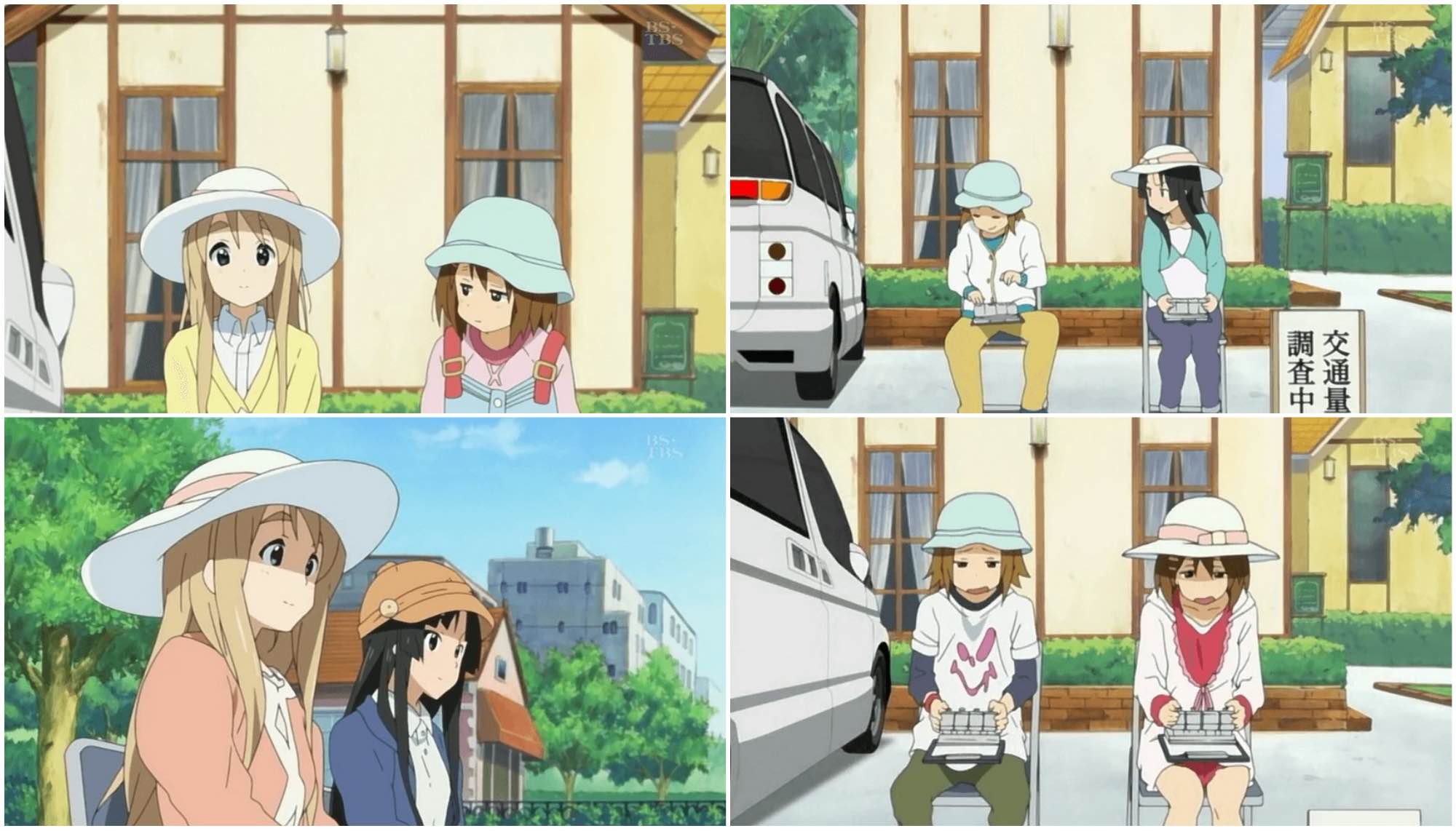
According to cultural critic Hiroki Azuma, the centrality of characters is a prime aspect in contemporary otaku culture. In the wake of Japan’s postmodern age come 1995, he argues that the “small narratives” that make up the subject’s worldview no longer were rooted in a wholistic “grand narrative” of ideology, but instead in a “grand database” that presents them as a cluster of disparate parts. As a result, otaku media and consumption were no longer interested in the engagement in fictional narratives, but in affective responses to characters. These characters are not in need of a narrative background, nor are they so much wholistic entities as assemblages of categorized traits (maid outfit, glasses, cat ears, etc.) that can be rearranged as the consumer pleases. From the point of their creation, they exist as floating beings within a database of consumption-production (Azuma, 178-183). Fans might make fan art or write fanfics around the character, cosplay as it or build a model of it. Or they may buy any number of figures or other forms of merchandize. While these activities may be present in any media subculture, what characterizes otaku database culture is that they are as authentic as the thing that they are based on. In the database, there is no longer any division between original and copy, between author and audience.
Now, it should be noted that Azuma sees in the shift to the grand database a movement away from anime and manga toward other mediums, particularly gal games, and also that his analysis includes several details that are unnecessary to get into here (Azuma, 184). Nonetheless there are a couple of interesting things to be drawn from his thesis. The first is the correlation between otaku database culture and slice of life. Both arose into prominence around the same time period, and slice of life’s priority of characters over plot aligns extremely well with the database consumption described by Azuma. Here is thus a possible reason behind the genre’s large popularity and consumer appeal, at least in Japan.
The second is the idea of characters as something that transcends its media origin, entering a network of consumer interactivity. Forum commenter Gabagool touches on this when he writes that “I would watch the characters from K-On! or Haruhi or any shows like that do ANYTHING. Solve crimes, paint pictures, have a picnic…. nothing..” (“What makes a slice of life worth watching?”, MyAnimeList) When the characters are so central and the plot so peripheral as in slice of life, it greatly enhances and encourages the option to place the characters in situations outside of the plot. Given their established traits and dynamics, how would the girls from K-On! or Azumanga Daioh deal with going on a job interview or being stuck on a deserted island? Or perhaps even more interestingly, what would their interactions look like if they were to meet each other? These are questions that may be explored by any fan of these works, either as imagined or as realized through fan material. In accordance with Azuma’s database theory, slice of life characters’ loose relationship to their narratives enables a more active level of audience engagement.
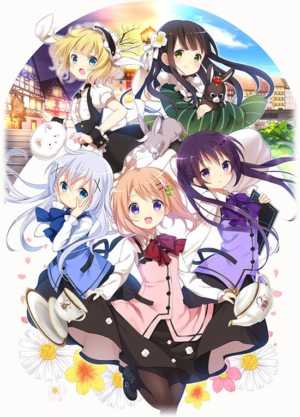
Here it may further be necessary to regard the basis for this engagement. What in the English translation of Azuma’s article is referred to as “affective” (as in affective responses to characters) is in its original Japanese termed “moe“. In Western anime fandom, moe is a common term used to define a certain aesthetic of cutesiness – but in Japanese otaku discourse it refers to an experiential phenomenon. Namely, it is used to express a special type of attraction toward a fictional character. Azuma’s perception of moe however appears to be highly superficial, limited to a base-level satisfaction that gets triggered by preferential ingredients. On the contrary, Patrick W. Galbraith’s The Moé Manifesto, which consists of interviews with numerous people involved in otaku culture, shows that it goes much deeper than that. Fans’ love for their favorite character can be extremely strong and dedicated, even to the point that they declare them as their wife and decide to marry them (Galbraith; 7, 29, 74-75, 118). The term involves a desire of possession and in many cases embodiment, with fans dressing up and performing as their favorite character as if wanting to become them (Galbraith; 75-78, 121-123). It may also be a deeply intimate and private feeling that one wants to savor and therefore not share with others; and unspoken love based on indirect longing (Galbraith; 85-86). In short it is an experience of passionate affection containing numerous nuances.
With this in mind, it is not hard to recognize slice of life’s strong capability of eliciting a moe response given its nature. As forum commenter jal90 puts it: “the idea of a slice-of-life, as it is focused on the characters rather than the events, tends to create stronger bonds between them and the audience.” (“Random slice of life anime – How did you guys come to like it?”, MyAnimeList) Any type of narrative is capable of presenting characters that the viewer can deeply connect with, but because of this genre’s database-like hypercentrality of characters over narrative, the capability is especially strong. Not only is the viewer given more time spent on specifically the characters and their personalities, but the potential connection with any given character can easily transcend the narrative context and thus become deeply more personal.
Relatability
Because of slice of life’s focus on the everyday, a lot of forum commenters explain that the genre tends to present narratives that are easier to relate to than others. Not often does one’s own life play out like a dramatically structured narrative, filled with large-scale events and high-stake conflicts. Slice of life displays regular down to earth characters that are easy to connect with, placed in situations that can and perhaps has happened to the viewer. This is worth pushing a bit further. Beyond the relatability created by the genre’s close vicinity to reality, the focus on the everyday comes with a lot of possibilities in terms of narrative exploration. Namely, it opens up an opportunity to highlight the little things in life; things that within a grander narrative may be extremely insignificant, but which are nonetheless impactful to the average everyday person experiencing them. These can narratively be both very wholistic and very specific.
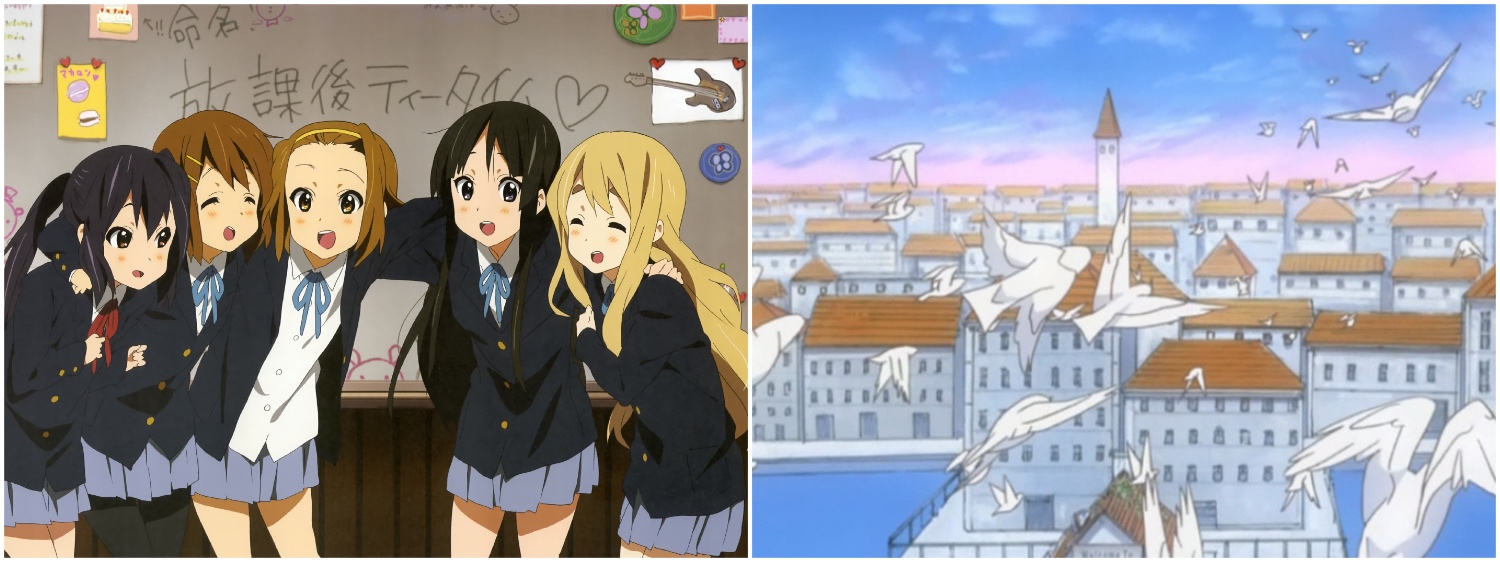
The previously discussed titles Aria and K-On! are both great examples of the former. As already mentioned, K-On! uses the explorations of its characters and ensemble dynamics to depict a growing friendship. Anyone who has been a part of a tightly knit group of friends in high school or any other environment should be strongly familiar with this depiction. The experience of goofing around together like idiots, of developing numerous inside jokes, of getting along in the most natural of ways – these are things that K-On! captures with smooth seamlessness. What is then added to this come the second season is a strong level of mono no aware. Translating to “the pathos of things”, this phrase indicates an awareness and sorrow over the impermanence of all things; of grieving yet accepting that nothing lasts forever. The mono no aware in K-On!‘s case is the girls’ precious time as high school friends. As each day goes by and graduation draws closer, they have to confront the eventual dissolution of their group. As such the series not only reflects the innocence of youth and intimacy of close friendship, but also the inevitability of saying goodbye to these things.
Aria certainly contains elements of this as well, but with its focus being more on the environment than the character chemistry. The series is an exemplary case of “descriptive storytelling”, which briefly put is a narrative concept where a conventionally goal-oriented dramatic structure is replaced by a centrality on world building. Following its ensemble cast in their daily work as Undines, the series depicts a gradual exploration and familiarization with the city of Neo-Venezia and its inhabitants. Each episode adds another piece to this depiction, either by exploring new places, introducing new characters, presenting one of the city’s various traditions, or digging into some of its hidden mysteries – or by further developing any of the above. By the end of the series, because of the organic progression of its everyday, the viewer has grown as attached to this city as the main cast. If K-On! utilizes the everyday to capture the growth of friendship, then Aria uses it to capture the growing attachment to a home environment.
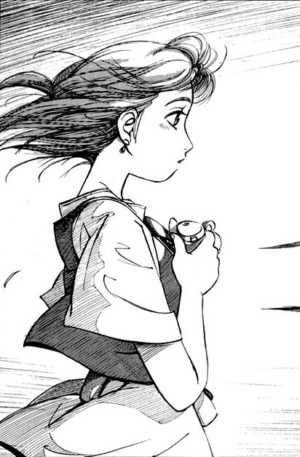
Another great example is the manga Yokohama Kaidashi Kikou (1994), which in a sense finds itself in between Aria and K-On!. Like Aria it is an iyashi-kei containing strong elements of descriptive storytelling (albeit not as elaborately). Like K-On! it conveys a fleeting time passage and a mono no aware of the things one holds dear, thus also arriving at the confrontation of loss and departure (perhaps more elaborately so). It follows female android Alpha in her peaceful everyday, either tending her small café and its scarcely few customers (most of which are her own close friends) or exploring the world around her. This is set against a post-apocalyptic backdrop, that continuously communicates a nostalgic remembrance of a civilization that once was.
Permeating the narrative are themes of loss and recovery delivered in both small and large doses – of which the most prominent may be the development of characters Takahiro and Matsuki. At their initial introductions they are young children who are close friends to Alpha and often accompany her in her activities. But as the series progresses they come to gradually grow up, all the while Alpha, being an android, remains the same. This is conveyed without any time skip, instead showing the kids mature little by little for each chapter that they appear in. As such the series manages to perfectly capture the bittersweet experience deriving from the phrase “they grow up so fast”; Alpha quietly lives her life day by day, while time is fleeting in the world around her. As her close friends enter adulthood they grow away from her, pursuing the dreams and passions in their own lives. But while the loss is painfully prevalent the series makes sure to ultimately conclude at the recovery. By the second to last chapter the motif of the post-apocalyptic backdrop is brought to the forefront, as Alpha concludes that she will cherish the memories she has of her friends while moving forward.
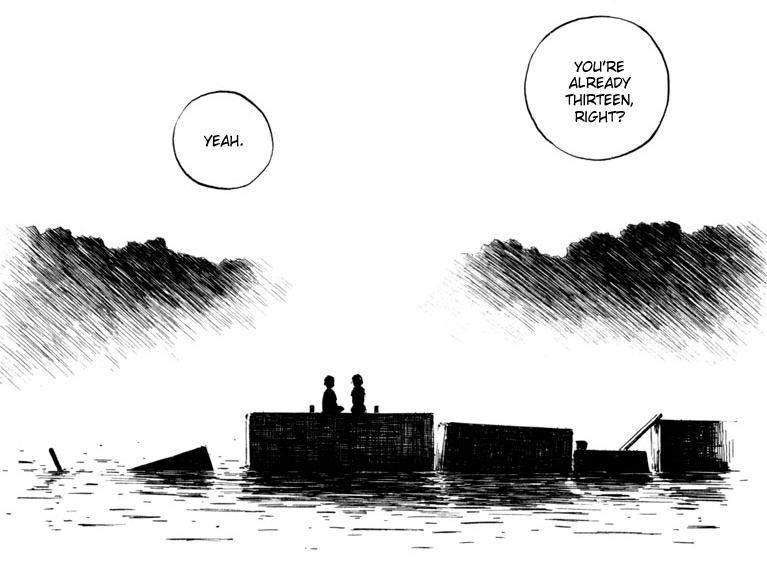
Both Aria, K-On! and Yokohama Kaidashi Kikou showcase a very interesting approach to narrative progression. Each episode/chapter consists of (in true slice of life spirit) one or a series of narrative vignettes centering around events of mundanity. These vignettes are seemingly inconsequential in isolation, but added up into a narrative continuum they present a surprisingly major development. As such they manage to reflect any similar development that one might experience in one’s own life. The familiarization of a home environment, the growth of a long friendship, the drifting apart of one’s nears and dears – these are things that one might only faintly notice through one’s day to day, but which ultimately become some of the most significant things in one’s life.
These are all cases of relatability in a wholistic sense, being conveyed through the entirety of a narrative and reflecting a grander life experience. It can also be conveyed through very specific aspects or even moments within a narrative, consequently reflecting an experience of equal specificity. Consider for one the character arc of protagonist Futaba from the series Amanchu! (2016, based on a manga by the same author as Aria). The show starts off at her first day in high school, in a new town where she doesn’t know anyone. Alienated to her environment she isolates herself in nostalgia through her phone, by constantly looking at photos from middle school and checking for messages from her old friends. That is until she befriends the much livelier Hikari, who as a polar opposite in personality helps her open up to the current world around her. This progression is not least depicted through the extreme thoroughness of Futaba’s internal monologue, covering everything from her anxiety before the self-introduction at the first day in class, to her sentimental fondness of the time she spends with her new friends. What the arc of Futaba thus showcases is the struggle of entering a new and unfamiliar placement in one’s life while leaving the previous one behind, as well as the eventual adaptation to and growing love for this new placement.
Another strong example can be seen in the series NieA Under 7 (2000). Shy and timid protagonist Mayuko gets invited by her classmate Chiaki to a get-together with the latter’s friends. Mayuko however, not being the first to feel confident in lively social gatherings with strangers, is very reluctant toward the invitation. Filled with alienation and uncertainty before the event, she thinks of getting a haircut and tests out some clothes, but to no avail. At the last moment she thus calls it off, a decision that consequently gets her confronted with her doubt over herself and what she wants in life. What follows is an extensive melancholic sequence depicting her depressed contemplation over her insecurities. Through a slow pacing, isolating shots and an empty quietness, the sequence intensely captures the feeling one experiences when confronted with any of one’s smaller weaknesses. Rather than an emotional breakdown, it is simply a state of being extremely down and gloomy – a state of melancholy.
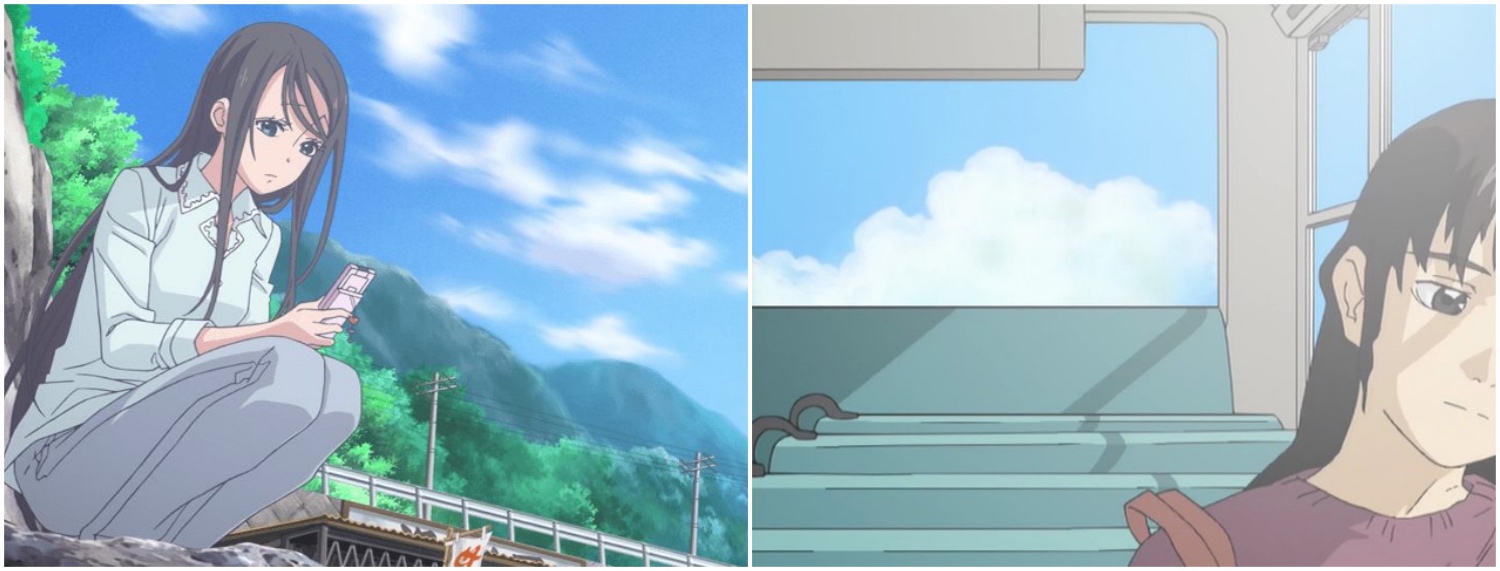
K-On!, Aria and Yokohama Kaidashi Kikou showcased experiences resulted from an extended period of one’s life. In contrast, Amanchu! and NieA Under 7 present small momentary issues that in a larger life context appear as extremely minuscule, as arbitrary things that one soon enough will get over. But at the point of occurrence they are very emotionally impactful nonetheless, which these series make sure to capture by focusing on them with thorough detail. This article began with stating that slice of life lacks conflict, but these various examples have clearly shown that that is not the case. Rather, since the narrative mode is conceived within such an ordinary framework it is often unrecognized. Nonetheless it is there, and by acknowledging it one may see that it holds an extremely intimate relatability. Growing apart from your childhood friends, having to say goodbye to a loved one, the struggle of accustoming to a new environment, confronting your smaller faults as a person – these are the conflicts that we face in our regular lives, and which slice of life has the capability to reflect with striking accuracy.
In the end, it is clear that the appeals of slice of life are many and varied. Not despite, but because of the genre’s unconventional nature it offers types of enjoyment that cannot be found anywhere else. It can be a means of relaxation, providing a calming space where one can reside and recuperate. It can be an exciting exploration of characters and ensemble dynamics, as well as invite for a more interactive and intimate viewer relationship to said characters. It can also be a depiction of everyday issues familiar to the regular viewer, thus being deeply relatable. While the genre may not be for everyone, it is evidently for a lot of people, and this article has been an attempt at presenting some of the reasons why.
Works Cited
Articles
Azuma, Hiroki, LaMarre, Thomas, “The Animalization of Otaku Culture”, Mechademia, vol. 2, 2007
blautoothdmand, “Descriptive storytelling – When world building and narrative collide”, blautoothdmand, 2016, <https://blautoothdmand.wordpress.com/2016/06/15/descriptive-storytelling-when-world-building-and-narrative-collide/>
Digibro, “K-On! – A Loving Thesis (Part 1)”, My Sword is Unbelievably Dull, 2014, <https://myswordisunbelievablydull.wordpress.com/2014/11/18/k-on-a-loving-thesis-part-1/>
Galbraith, Patrick W., The Moé Manifesto, Tuttle Publishing, 2014
Roquet, Paul, “Ambient Literature and the Aesthetics of Calm: Mood Regulation in Contemporary Japanese Fiction”, The Journal of Japanese Studies, vol. 35, no. 1, 2009
Tanaka, Motoko, “Trends of Fiction in 2000s Japanese Pop Culture”, ejcjs, vol. 14, no. 2, 2014, <http://www.japanesestudies.org.uk/ejcjs/vol14/iss2/tanaka.html>
Forums
“How does one get into slice of life?”, MyAnimeList, 23/2/17-24/2/17, <https://myanimelist.net/forum/?topicid=1594362>
“List your favorite Slice of Life anime and say why without describing the main plot.”, reddit, 5/1/15, <https://www.reddit.com/r/anime/comments/2rg2x0/list_your_favorite_slice_of_life_anime_and_say/>
“Random slice of life anime – How did you guys come to like it?”, MyAnimeList, 26/4/12-18/7/16, <https://myanimelist.net/forum/?topicid=433429&show=50>
“Slice of Life enjoyment”, MyAnimeList, 8/11/9-23/1/10, <https://myanimelist.net/forum/?topicid=129948>
“What are the elements that make you enjoy a Slice of Life/CGDCT show?”, reddit, 8/6/17, <https://www.reddit.com/r/anime/comments/6g3uk6/what_are_the_elements_that_make_you_enjoy_a_slice/>
“What is the appeal of the CGDCT, pretty boys doing things well and slice of life genres?”, reddit, 10/6/17, <https://www.reddit.com/r/anime/comments/6gcl0o/what_is_the_appeal_of_the_cgdct_pretty_boys_doing/>
“What makes a good ‘slice-of-life’ anime?”, reddit, 24/1/15, <https://www.reddit.com/r/anime/comments/2thfks/what_makes_a_good_sliceoflife_anime/>
“What makes a good slice of life anime?”, reddit, 12/10/13, <https://www.reddit.com/r/anime/comments/1oa2uj/what_makes_a_good_slice_of_life_anime/>
“What makes a good slice of life show?”, MyAnimeList, 27/9/15-28/9/15, <https://myanimelist.net/forum/?topicid=1432799>
“What makes a slice of life worth watching?”, MyAnimeList, 3/6/16-7/6/16, <https://myanimelist.net/forum/?topicid=1517813&show=50>
“What would make for your ideal slice of life?”, MyAnimeList, 4/5/16-9/5/16, <https://myanimelist.net/forum/?topicid=1507064>
“Why do people like slice of life shows?”, Crunchyroll, 4/7/14-4/10/14, <http://www.crunchyroll.com/forumtopic-845497/why-do-people-like-slice-of-life-shows>
“Why is slice of life such a popular genre?”, MyAnimeList, 26/12/16-27/12/16, <https://myanimelist.net/forum/?topicid=1579658>
“Why is the slice of life genre so popular?”, reddit, 7/9/16, <https://www.reddit.com/r/anime/comments/51lw5p/why_is_the_slice_of_life_genre_so_popular/>
“why watch slice of life ANIME”, MyAnimeList, 7/4/9-8/10/13, <https://myanimelist.net/forum/?topicid=77912>
What do you think? Leave a comment.




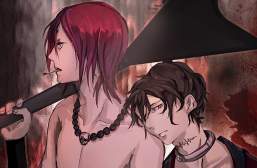
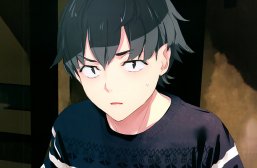
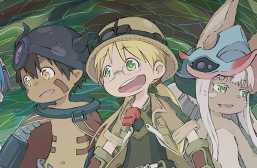
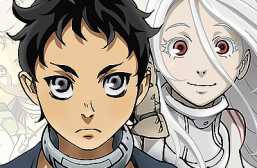
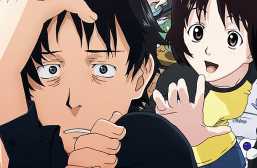
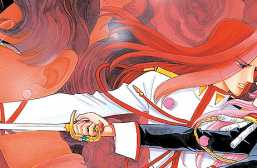
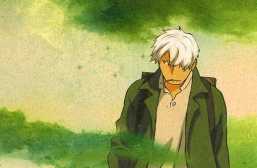
I was having a debate with fellow anime fans recently about the appeal of slice of life. We brought up some good arguments.
Anime, or rather just about all cartoons or animation, is about exaggeration. When someone watches a bunch of anime that’s all about intense fight scenes and dark and mysterious plots it can lead to some feeling desensitised to specific elements. Maybe you get to the point where comparisons happen even if you don’t mean too and it hurts your experience watching what should be the next big thing. A lot of these points get their attention through exaggerating motives and over complex thinking. Good stories usually have motives and character views. While plenty of the shonen genre and other highly intense anime have these points implemented in them it is usually not the main focus or at least not inherently. It’s usually used as a means to give reasons to why characters should oppose each other.
What slice of life is to me is a means to appreciate the more relaxed and human side that anime has to offer. Slice of life offers a more reasonable and focused expression of these points. while slice of life may have nothing specifically unique to offer, I believe they can easily delve into world views and opinions in a way that doesn’t feel so grand.
Most people I meet that dislike anime in the first place give a reason such as it goes too far and it becomes unrelatable or uninteresting because of these terms and scenarios that don’t normally exist but I bet an anime like toradora or durarara would be more appealing.
In all honesty most slice of life are not as profound as what I made it seem. The amount of slice of life that have barely any meaning far outway the amount that do but that’s just the market making copies hoping that if they copy enough of it it’ll be the next big thing which is a problem any genre has to deal with.
Everyone has things they are naturally attracted and unattracted to.
I think the point that making a slice of life anime appealing is how the everyday life in the series connect with the audience. For example, what make I love Barakamon is I (in some extent) have been in Handa’s situation; living in a village I never heard about, how to connect with the people, and of course the kids (some of them really naughty and cause troubles); so when watching it I feel the connection with the environment of the show. Other example is, Silver Spoon; my late grandfather was a farmer, and some of my uncles are farmers too. So when watching a scene about how to manage a farm, and the hardship of this business that they face; I can feel connection with the show, and make it more interesting for me…
Yes, this is essentially my thesis in the “Relatability” section. Since we all generally live a mundane everyday, slice of life is able to present narratives that we can relate to as regular people. That’s really cool to hear that you have these types of connections!
The most interesting SoL shows are the ones that are not (heavily) set in school.
The problem with this type of animes is, most of the time they have initial goal (become pop star, saving the club, etc) but they waste good chunk of episodes doing nothing to reach that goal and don’t forget that they always have one beach/swimsuit episode which exist just to sell merchandise. It’s a huge waste of time.
I think there are a couple of things worth considering in regards to your point. The first is that slice of life is character-driven and not plot-driven – that is, it’s driven by internal instead of external elements. The second is that it lacks a traditional dramatic structure: no overarching goal led by a conflict, no act structure providing buildup and payoff. On top of this it centers around everyday settings and mundane narrative events that are ostensibly dull compared to other stories. As a result, it may seem that it merely consists of a bunch of characters “doing nothing”, but (as I write in the “Characters” section) it’s not what they’re doing that’s of interest, but how they’re doing it as characters.
Some series can be quite deceptive regarding the plot/character-hierarchy. In accordance with what you’re describing, they may set up a premise that suggests a plot-driven narrative, but which in reality is relatively insignificant. K-On! is on paper about a high school music ensemble, but really it’s about the growing friendship of a group of girls. All of the plotless shenanigans that the series mainly consists of serves to explore and develop the characters and group dynamics, thus contributing to the internal instead of the external element.
I completely understand and respect if the genre isn’t for you though, it’s certainly a sentiment that you share with a lot of people.
I agree sometimes theres such a thing as too many filler episodes which deter from initial premises.
For me the main reason why I watch cutesy slice of life anime is the yuri subtext. Cuteness is the distant second.
Thanks for introducing me to slice of life anime. I have watched a couple of anime shows but didn’t know too much about it.
You’re welcome! I hope you find something in the genre to your liking.
I enjoy Slice of life anime because it’s relaxing. Just to pass time. No big reveal and big plot twist.
Well I like slice of life but I am highly picky with it I believe if your going to make a slice of life you have to real be relatable and come with real life scenarios something interesting plus I feel like most slice of life doesn’t really reflect real life Japan it just fabricated Moe stuff (which is a guilty pleasures of mine) I seen manga call love so life that a slice of life and personally I think pretty good the it has moe but it treat it as an ascetic but it has character development and characters are really fleshed out and it really doesn’t focus on how much cute it is generally is trying to tell a story and Nana I believe you watch to is good that I heard but yeah I can see why most people don’t like it but I feel like If put effort into to it maybe it will have more of a widen audience P.S. I like game no life sorry
You need to add punctuation somewhere there. 🙂
I like some sol anime because they are relatable like oregairu. But I have to admit some sol doesn’t appeal to me especially moe anime
I don’t watch much slice of life, but one that i absolutely love and highly recommend is Shirobako. It explores the inner workings of the anime industry. Each of the main characters has unique ambitions and struggles, which makes them relatable and easy to get behind. There’s also a real sense of progress, which kinda goes against the idea of slice of life. And if not for that, the subject is fascinating. You get to see everything that goes into anime production. It shows that even a mediocre moe anime requires insane amounts of work.
Slice of life is my least favorite type of anime unless there’s some action in it.
The most Slice of Life shows are just boring and not worth it to put time into it. But there also are some really great ones like Shirobako or Girls Last Tour which is currently airing.
Sucha good article! My favorites 3 gathsu no lion, toradora, natsume youjinchou , usagi drop and gakkougurashi(in my opinion the 2 nd best horror anime ever made).
Azumanga Daiho is the only sol show I ever liked.
Fantastic analysis of the genre. I didn’t like slice of life anime (actually used to hate it) because I found it boring to watch. Now there are quite a few that have made me change my mind about the genre. Barakamon, My Love Story, Natsume Yuujinchou, Recorder to Randoseru, Kuragehime, Tanaka-kun wa Itsumo Kedaruge, etc. I love watching each of them because they’re entertaining & make me want to see what will happen next episode as opposed to just watching them to pass the time.
Still have a lot to see about Slice of Life, but I enjoyed Kimi no Na Wa and Nichijou.
I always found slice of life hard to treat the characters as human when there trying to make the characters realistic without showing complex emotions. Most SoL anime have children as the main characters and I was never able to relate to children in anime.
Lovely writing. So… how do I put this… I usually watch slice of life anime when it’s a bad day, when I start feeling not okay and other negative thoughts come into minds, then I tune in one or two slice of life anime episodes to to clear those fogs. I’m that kind of dude who can’t switch my mood from sad to happy without something in between.
Cool, so you’d be in the “Relaxation” camp then?
You’re goddamn right! 😉
I like slice of life. My favorites are K-ON and SNAFU. I feel like I could relate to some of the characters and some are to me are really funny such as New Game.
I dont particularly care about Slice of life itself. If it shows some cute lolis, i like those lolis , but even so , i dont care about the anime itself. When i find out a good loli(s) i want to watch more of her, but i dont really care about the rest of the characters or the plot, i simply dont watch it, if i find out that its boring to me i eventually wont watch it .Simple as that . Following that logic of myself i have enjoyed watching tons of anime lolis, but i have barely seen 90% of any of their respective anime .I just like lolis, not lolis-based anime.
Now that’s really interesting, because this is exactly what Azuma argues with his database theory. The idea that narrative is vastly secondary to characters, consequently making the characters transcend their narrative contexts and instead become part of a collective database. So when you say that you enjoy watching loli characters but haven’t seen most of their respective series, do you consume them through other pieces of media such as fan works and merchandise (what Azuma would call “derivative works”)?
I can certainly appreciate a good slice of life, as long as it shows the interesting parts of daily life rather than boring (and repetitive) occurrences. This is why I love series like K-ON!, Nichibros (Danshi Kokosei no Nichijo), and Maidragon (Kobayashi San’s Dragon Maid), but dislike series like Strawberry Marshmallow, Asatte no Hokou, Tomako Market, and Sora no Woto. As long as the characters are vibrant and interesting, and there aren’t any heavy-handed cliches (the abusive/tsundere/childhood friend), then I will probably enjoy it; provided it’s not taking itself too seriously.
One thing i dislike is they only take place in japan.
Slice of life anime that focus on character growth like in K-on, Idolmaster, Hibike Euphoium, and Love Live (plus they have music and as a music nerd I love them for that too) work for me.
I feel like I am learning about the characters and what they want to do. Plus I like cuteness and are a good breather especially between study breaks and the creators dont do anything I feel is crossing the line. Showing skin does not always equal sexualization despite common belief. But other things that just aim to be cute dont work since its just cuteness. That expection for me is New Game(and to a less extent Lucky Star since I havent watched it in a long time) and that is because its more about jokes in a work place enviorment and its pretty cute and actually funny. Also I hate slice of life that tries to combine cuteness and sex appeal because it is usually a trashy series and feels sleazy at points.
Very interesting writeup. On one hand, I do enjoy slice of life for certain aspects such as specific plots points (say…the series is about romance or some pursuit towards a dream or maybe something about a group of friends growing up together) but then there’s the other aspects….in which most slice of life shows churn out the same stuff….and their settings end up making me grow bored….legit, how many times do I need to see everyone in school. IDK….that’s just me.
I can see that I am going to have get into this genre for the new year. Maybe a new year’s resolution.
I personally am not really picky as far as the genre as long as it’s written well… Like i’m not really phased by slice of life anime, mind u i don’t watch alot of them… It’s just i feel like slice of life is sorta like romance it’s an element in a story that i can tolerate when there are different factors in the story as well… Like i wouldn’t mind watching the mundane side of a character’s lifestyle from one of my favorite series… like Watching an episode all about Yang wenli going on a date or to an amusement park or something as it illustrates different factors in said characters life and personality, But as far as slice of life in general I’m ok with it but if that’s all the story has to offer then meh…
Slice of Life is one of my favorite genres outside of romance and comedies. Why? There isn’t a real particular reason as to why, it just sort of happens. SoL shows are supposed to be perceived as something that could actually happen in real life (there are cases where there’s no fucking way it could but thats just ultimately up to the content creators) so it’s appeals to the audience since they can relate to it. Some people watch it because it’s cute (moe?) and love the art style. Some people watch it because there’s literally nothing else they would want to watch, but hey they do what THEY want.
I am generally not a huge SOL guy but some definitely work for me and when they work they work well. Girls Last Tour is an excellent example of SOL that works for me.
Theres only one slice of life show I like. It’s a manga called solanin.
Never been a fan personally of this genre, though I have only watched bits and pieces of them, most of them don’t have enough going on to get me invested enough to continue the show
I would say it’s psychological. My life sucks and I’m anti social as hell. These shows portray a near perfect life with no conflict. and it also feels like I’m hanging out with a group of friends while not having to engage in social interaction with them. basically escapism. I’ll say this is just my personal reason but lets be honest here guys.
Slice of life anime can be really interesting when mixed with other genres, like Clannad, Uchuu Kyoudai, and Cross Game. Some slice of life anime do have interesting stories and character development, like Barakamon and Usagi Drop. As for the school life type of anime, I usually find them terrible and couldn’t finish most of the ones I watched, the only exceptions for this are K-On and Non Non Biyori, I honestly can’t tell what it is that I liked about them but I did enjoy them.
Watching slice of life is a good way to understand other cultures.
Interesting point! I can totally see this; with the everyday brought to the forefront, you get a more detailed insight into what that everyday looks like culturally. This would be another appeal of the genre then!
Slice of life is so calming to me. It really hard to explain but just such a pleasant thing to watch now and again.
Difficult to disagree with this article, but… the characters are usually really boring and that’ll kill just about any form of entertainment for me, especially if the character is more defined by how cute they are more than anything else. A lack of supernatural elements kills an anime for me too. This will keep me away from just about any anime. If the latter isn’t there, the anime better be really really fucking good, which of course isn’t the case if the characters are boring.
I like slice of life anime’s because of how they make me feel and the emotional situations that they have. The friend bonding episodes and overcoming the emotional hurdle always tears me up a little. I have never been good at making friends, so I never really got to experience any of it growing up. This is my way of experiencing it since I can’t go back in time and change myself to experience it.
Best slice of life anime i’ve ever watched: Kimi to Boku (there are two seasons of it)
I personally really enjoy slice of life anime. Like, yeah they’re not always the best shows in the world, but I find them very relaxing and entertaining. However, there are some slice of life animes that are super good (therefore exceptions). Clannad would be a good example of that. But yeah, I don’t mind slice of life anime, as long as I have variety in the animes I watch, then I’m happy. I think the reason people really enjoy slice of life anime is because a lot of them take place in school settings so a lot of us who are still in school can identify with the story and characters.
I like to see unique slice of life animes, not animes that will always take place in a school setting. Don’t get me wrong, I don’t mind anime that takes place in a school setting, but there have been so many of them that I tend to get tired of them sometimes.
Anyways, that’s just my thing on slice of anime. I hope I helped give some good insight! Oh and, amazing post you published here!
Slice of Life doesn’t make up a large portion of the anime that I watch but there definitely plenty of hidden gems.
The only times I’ll ever bother with slice of life anime is either when I can’t find anything better, meaning I’ll probably drop them part way in. Or if its been a particularly hard or busy day where I’m just too mentally fatigued for action, fast paced shows or involved deep stories. Basically, an afternoon of watching mindless drivel that is kind of amusing for a little while, but is mostly forgotten and not re-visited the next day..
Honey and Clover, Space Brothers, Beck. These are some SoL anime that I like.
Slice of life is saved when i want to relax for a bit
Slice of Life is up there for me. Hibike! Euphonium is an amazing show. Diverse Cast, amazing animation, top notch sound design and the script is on point. Anime similar to Umaru-chan make me cringe or hate them. There are people [Characters] who are more deserving of her talents. Characters related to Umaru arguably become dislikable.
They are usually forgetable but enjoyable to watch.
I enjoyed D-Frag because it was a nice change from watching shows and anime with more serious themes. I’ve found when I purchase anime on a hard copy I’m more inclined to enjoy it as well since I’ve spent the money already and most of the slice of life I’ve watched I own a hard copy of.
If I’m watching a slice of life show I almost always make sure there’s a drama tag next to it since those tend to be the better ones. Considering Shouwa Genroku Rakugo Shinjuu and March Comes in Like a Lion are now two of my favorite series of all time, I’d say I’ve been making the right decision.
Like any genre, there are good and bad examples of it. Some action films have characters that blend together, and the action is obscured by close-ups and shaky-cam, (Transformers & Expendables.) but not every action film is like that. Some slice-of-life shows are all about lighthearted atmosphere, lack of plot and character-development, and inoffensive cuteness. That is the trend, but we also have the occasional show that is therapeutic because it takes on drama that we face in regular everyday life; finding confidence, learning to apologize, handling depression etc.
Maybe this article will inspire those who have never seen any point in the Slice of Life genre to give it a chance, by encouraging them to relax and enjoy the beautiful simplicity of it all.
I like slice of life anime because I’m in high school so it relates to my school life. So that’s why I like slice of life.
Im not too familier with the slice of life genre, the only slice of life I would watch is mushishi for the more mature themes & atmosphere & non – loli cuteness garbage!
I enjoy slice of life anime. I tend to prefer other genres, but if there’s interesting enough story, I’ll give it a change. My favorites are Azumanga Daioh, maybe Nana (been a while since I read that one) and Ancient Magus’s Bride. :)
Silver Spoon by Hiromu Arakawa is my favorite slice of life, it’s drama, character development, comedy make you invested in the story.
I suppose I’m into Slice of Life because it gives me a good anime-style taste of the Japanese culture by focusing on the everyday life. My favourite so far is Barakamon.
Slice of Life ultimately excels in its ability to make the ordinary everyday seem interesting. Good article.
I feel like the slice of life genre is pure escapism. It lets you get away from your problems and jump into someone else’s life for a brief period of time.
slice of life anime is good for relaxing
I haven’t watched much slice of life anime but you’ve made me want to watch more. Great analysis of the genre.
In reference to the characters section, slice of life also contains the element of cute girls doing cute things, also attracting a certain appeal to the genre. These characters in most slice of life anime convey a sense of innocence and this innocence is what may also attract most to the genre. The element of innocence drives the protector and the admirer of slice of life, meaning for those who relate to the CGDCT character as an older sibling, they are attracted to protect that innocence and for those on the admiration side, the innocence is a conquest. To whomever this element appeals to, the innocence of CGDCT is another enticing element of slice of life anime.
Indeed! Perhaps I should’ve noted this in the article, but the subgenre of “cut girls doing cute things” as conceptualized in the Western fandom is (from my impression) equivalent to the nichijoukei genre abroad. You bring up a very interesting point in regards to the appeal of these “cute girls”. “Innocence” is a major trait of the classic bishoujo – a central character type in the lineage of otaku sexuality – and as such also a major factor to her moe appeal. Moreover, the roles of “protector” and “admirer” that you describe are two typical moe responses to this innocence on the side of the otaku consumer subject. I kinda glossed over the Japanese side of the coin (partly because “slice of life” as a genre isn’t really a thing there in the same way that it is in the West) but you touched on a factor related to this side that is very much relevant to the discussion. Great insight!
Honestly, I kind of gave up with delving further into the idea halfway through. I’m a novice to the anime world and I’m not too familiar with the elements, however I do enjoy Slice of life as it allows the viewers to delve into different aspects of Japanese culture at a relaxing pace.
*Thank You
One of my favorite slice-of-life anime is Natsume’s book of friends or Natsume Yuujinchou. I could bear watching it because of its interesting premise and the little lessons you could take from it. Also the characters are full of heart. Although Natsume has supernatural powers, there is no grand plot set out in which he is some ‘chosen’ person. This is simply as story about a boy meeting new people(or yokai). I recommend this to anyone who maybe looking for a slice of life. Thank you for writing the article, when I thought about it I realized that there aren’t many mediums which tell stories about normal mundane things of life.
You’ve convinced me to try slice of life animes! 🙂
I think it’s also a good way to explore interesting concepts and scenarios outside of the action genre. Like when watching something fantasy, you might wonder “what about characters who aren’t the hero? what’s their normal life like?” and slice of life can provide that.
I like Yotsuba to!
It give me a good sensation, like familiar and peace.